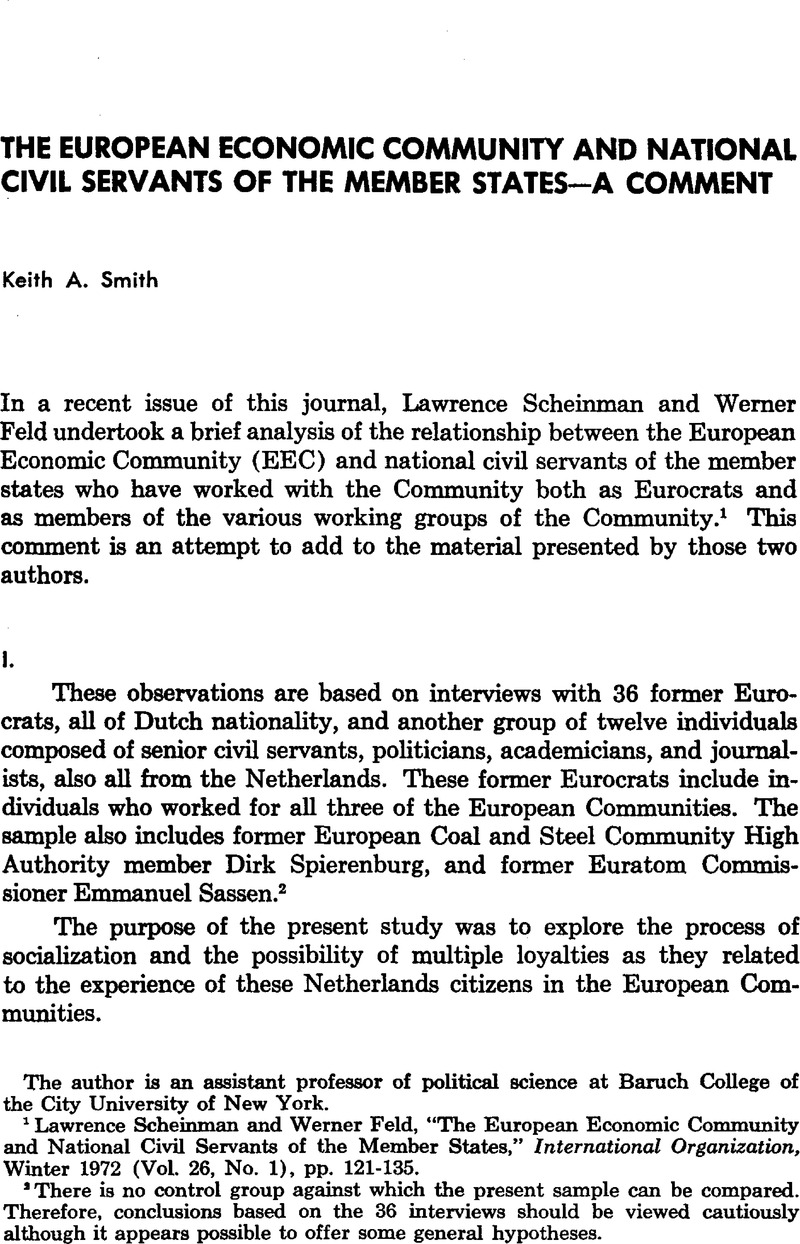Article contents
The European Economic Community and National Civil Servants of the Member States-A Comment
Published online by Cambridge University Press: 22 May 2009
Abstract

- Type
- Comment and Current Views
- Information
- Copyright
- Copyright © The IO Foundation 1973
References
1 Scheinman, Lawrence and Feld, Werner, “The European Economic Community and National Civil Servants of the Member States,” International Organization, Winter 1972 (Vol. 26, No. 1), pp. 121–135.CrossRefGoogle Scholar
2 There is no control group against which the present sample can be compared. Therefore, conclusions based on the 36 interviews should be viewed cautiously although it appears possible to offer some general hypotheses.
3 Scheinman and Feld, p. 123.
4 Scheinman and Feld, p. 123.
5 This obviously adds up to only 25 of the sample members. Three responded by mail, thereby not allowing for follow–up questions. The other eight, while indicating no conflicts in loyalties, were not prepared to elaborate on this point.
6 Scheinman and Feld, p. 124.
7 The remaining six individuals include Sassen and Spierenburg who were government nominees; two were Euratom research scientists who were recruited by former colleagues from the Delft Technological Institute; and two cannot be explained due to the fact that their responses were by mail and could not be clarified.
8 Scheinman and Feld, p. 131.
9 This, plus one who left in 1960—also not indicated by Scheinman and Feldmdash; makes the total number of Dutch who left during the period of time surveyed nine rather than six.
10 Scheniman and Feld, p. 133.
- 15
- Cited by


